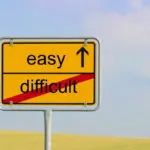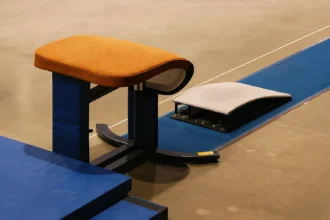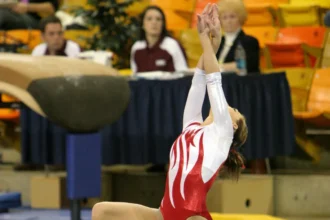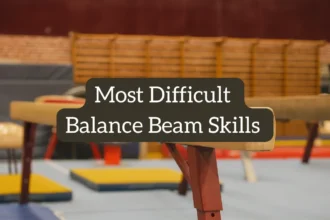The balance beam is widely regarded as one of the most challenging events in gymnastics. With its narrow 4-inch width and 4-foot elevation, this apparatus demands a unique combination of strength, flexibility, coordination, and above all, impeccable balance.
Here are some key tips and techniques for improving your balance and stability on the beam:
1. Engage Your Core
A strong core is essential for balance on the beam. Your core muscles, including your abs, obliques, and lower back, act as your body’s stabilizer.
When performing on a narrow surface like a balance beam. A strong core reduces wobbling, enhances precision in movements, and helps prevent falls. It also allows you to execute skills with more power and control.
How to Engage Your Core:
- Imagine pulling your navel towards your spine, creating a sensation of tightening throughout your midsection.
- Maintain this engagement consistently, whether you’re stationary, in motion, or executing complex skills.
- Incorporate core-strengthening exercises into your regular training routine:
- Planks (standard, side, and dynamic variations)
- Hollow body holds and rocks
- V-ups and leg lifts
- Russian twists
Pro Tip: Practice core engagement off the beam first. Once you’ve mastered the feeling, integrate it into your beam work, starting with basic skills and progressively moving to more advanced elements.
2. Find Your Center
When you’re on the balance beam, your center of gravity is the point where your body’s mass is evenly distributed. Keeping this center aligned with the beam is essential to avoid tipping over or losing balance.
By staying centered, you ensure that your weight is evenly distributed, making it easier to control your movements and stay steady. This is especially important during dynamic movements, like jumps or turns, where your center of gravity shifts quickly.
Techniques for Centering:
- Body Alignment: Visualize a vertical line running from your head to your feet, keeping it parallel to the beam at all times.
- Hip and Core Control: Keep your hips level and engage your core to minimize unnecessary shifting.
- Precise Foot Placement: Each step should be deliberate, with your weight evenly distributed over your feet.
- Gaze Fixation: Focus on a fixed point ahead to stabilize your body and maintain orientation.
Exercise: Practice the “Beam Walk” drill. Walk forward and backward on the beam, focusing on keeping your center of gravity directly above it. As you improve, add arm movements or slow leg lifts to challenge your stability.
3. Use Your Arms
Your arms are not mere accessories in beam work; they’re essential tools for balance and aesthetics. Proper arm positioning and movement can significantly enhance your stability and the overall look of your routine.
Effective Arm Techniques:
- Extended Position: Keep arms slightly bent at the elbows, shoulders relaxed, to widen your base of support.
- Synchronized Movements: Coordinate arm movements with the rest of your body to maintain balance during dynamic skills.
- Controlled Adjustments: Use small, precise arm movements to make minor balance corrections.
Drills to Improve Arm Control:
- Weighted Walks: Practice beam walks while holding light weights to enhance arm strength and control.
- Mirror Work: Use a mirror to check your arm positions during various skills, ensuring symmetry and proper placement.
- Blind Balance: Close your eyes while on a low beam or floor line, using only your arms to maintain balance.
4. Squeeze Your Legs
When you squeeze your legs together, you create a more unified and streamlined body position, which is easier to control on the narrow beam. This technique minimizes unnecessary movements, reduces wobbling, and enhances the overall aesthetics of your routine.
Additionally, it engages your inner thigh muscles, which are crucial for maintaining balance and performing jumps, turns, and other dynamic skills.
Perfecting Leg Squeeze:
- Engage inner thighs to pull legs tightly together throughout your routine.
- Point your toes to create a long, streamlined leg line.
- Practice in various positions: standing, walking, and during more complex movements.
Leg Engagement Drills:
- Passé Hold Challenge: Maintain a passé position on the beam for increasing durations, focusing on leg squeeze.
- Jump Series: Perform a series of straight leg jumps on the beam, emphasizing tight leg position in the air and on landing.
- Beam Line Hops: Set up a line on the floor and practice hopping sideways over it, keeping legs together and toes pointed.
5. Practice Visualization
Practicing visualization is a powerful technique that can significantly enhance your performance on the balance beam.
Visualization involves mentally rehearsing your routines, movements, and techniques before physically executing them.
This mental practice can help improve focus, reduce anxiety, and increase the likelihood of a successful performance. It can be particularly beneficial for beginners who may feel nervous or unsure.
Effective Visualization Techniques:
- Create detailed mental images of your routine, including sensory details.
- Visualize in real-time to sync your mental and physical timing.
- Incorporate all senses: sight, sound, touch, and even smell of the gym.
- Always end visualizations with successful outcomes to build confidence.
Visualization Exercise: Before bed each night, spend 5-10 minutes visualizing your beam routine. Start from mounting the beam and go through each skill, focusing on perfect execution and the feeling of confidence throughout.
6. Perfect Your Dismounts
The dismount is your final chance to impress and can make or break your routine. A solid, stuck landing demonstrates control, confidence, and mastery of the apparatus.
A solid landing, with no additional steps or wobbles, is often a decisive factor in scoring and can elevate your routine from good to great.
Keys to Sticking Dismounts:
- Maintain body alignment throughout the dismount skill.
- Bend knees slightly on landing to absorb impact.
- Keep feet together with toes pointed.
- Resist the urge to step or make additional movements after landing.
Dismount Drills:
- Trampoline to Pit: Practice your dismount skill on a trampoline, landing in a foam pit to build confidence.
- Gradual Height Increases: Start with dismounts from a lower height and gradually increase as you perfect your landing.
- Blind Landings: With a spotter, practice landings with your eyes closed to enhance proprioception.
Conclusion
Mastering the balance beam is a journey that requires dedication, patience, and consistent practice. By focusing on these six key areas – core engagement, finding your center, arm control, leg squeezing, visualization, and dismount perfection – you’ll build a solid foundation for success on this challenging apparatus.
Happy training, and may your beam routines always shine!













